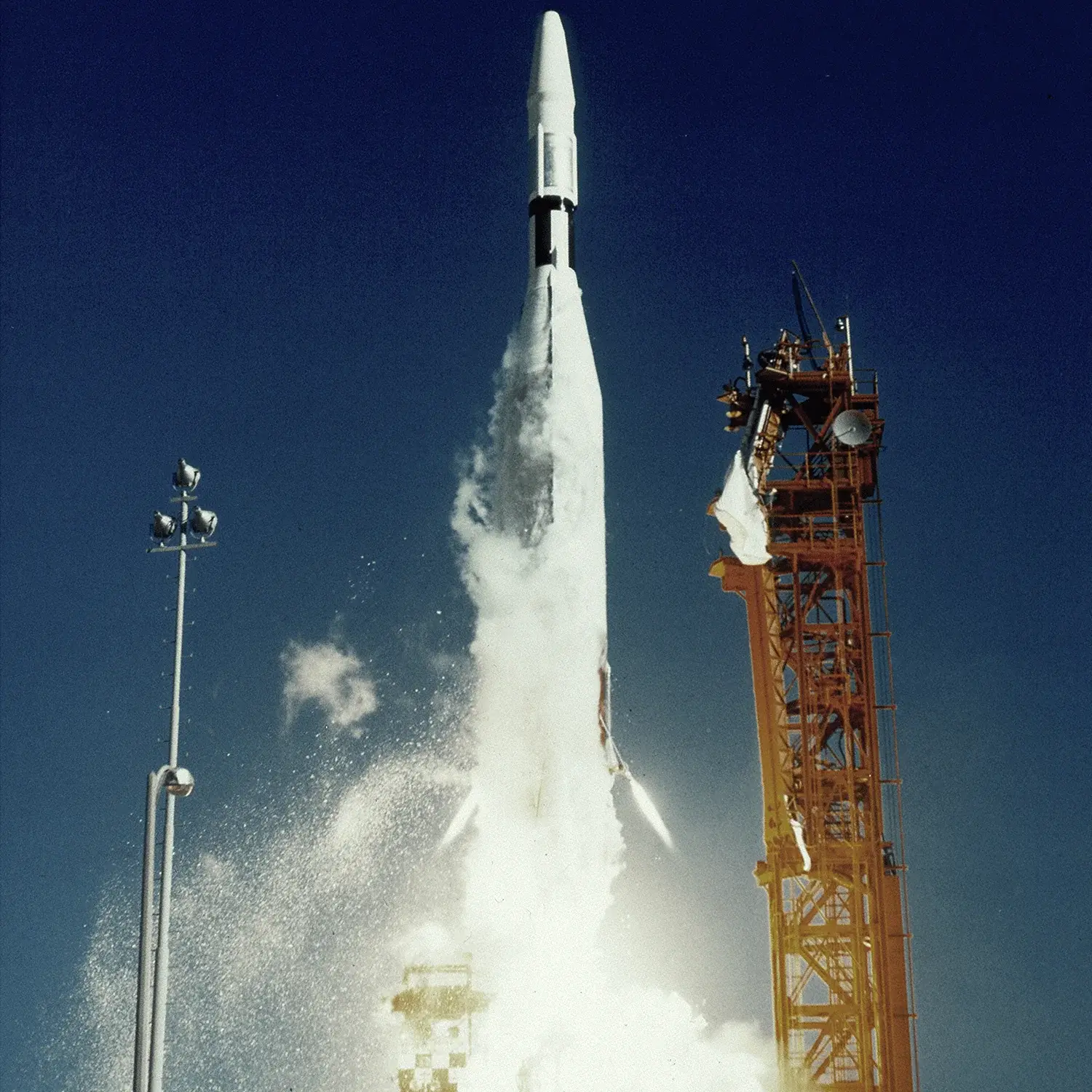Midas 7
Launch Success
Liftoff Time (GMT)
20:06:00
Thursday May 9, 1963
Watch Replay
Official Livestream
Mission Details
Midas 7
The MIDAS Series 3 (Military Defense Alarm System) satellites, MIDAS 6, 7, 8, and 9, were the third development models for the MIDAS early warning system. The Series III carried an improved Aerojet-General infrared payload. It featured a Bouwers concentric telescope with an 8-inch aperture. The detector array on the surface of the focal-plane assembly contained 184 lead sulfide detectors arranged in eight vertical columns of 23 detectors each which provided complete vertical coverage of a 24-degree 58-minute field of view. The 2.7-micron system provided both spectral and spatial background rejection, and emphasized boost phase detection of missiles in the "Atlas class." The telescope rotated on its spin table at 6 rpm, like its Baird-Atomic predecessor. The basic spacecraft remained unchanged from the Series II, except for reliability upgrades. The Agena-B upper stage of the Atlas-LV3 Agena-B launch vehicle was used as the spacecraft bus and provided power and attitude control to the MIDAS payload. Two deployable solar arrays were mounted on the aft equipment rack of the Agena-B to provide power. In its six-week operational period, MIDAS 7 detected all of the ballistic missiles launched within its field of view. These missiles included not only three liquid propellant Atlas and Titan ICBMs but offline tapes also revealed the detection of seven lower radiance solid propellant Minuteman and Polaris missiles. The Aerojet Series III payload achieved an operating radiance level sensitivity, with signal-to-noise, of 50 kw/STR. MIDAS technology was undeniably demonstrated; payload performance markedly exceeded expectations in the detection of solid-propellant rockets.
1 Payload
2,000 kilograms
Rocket

Launch Site
Stats
Atlas-Agena
25th
Mission
1st
Mission of 1963
1963
21st
Orbital launch attempt
